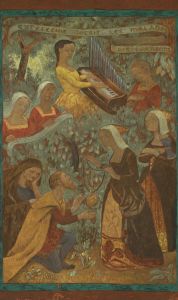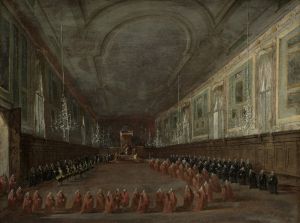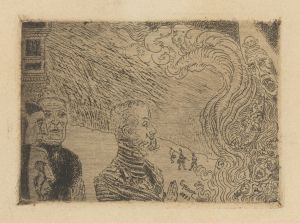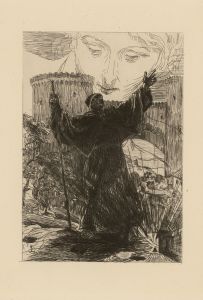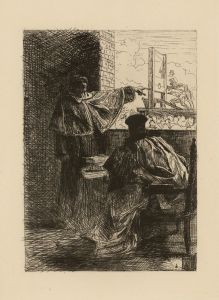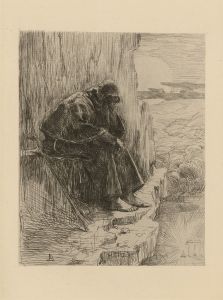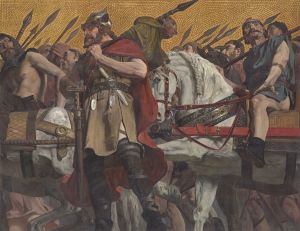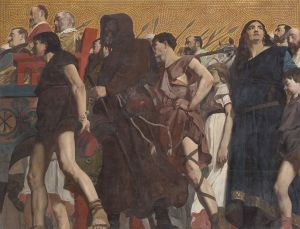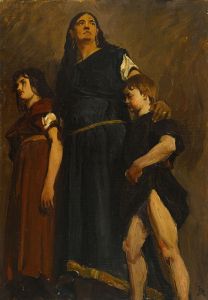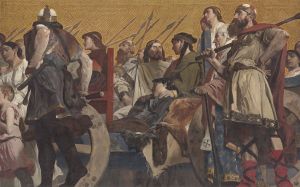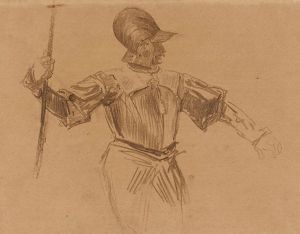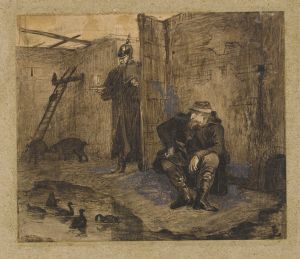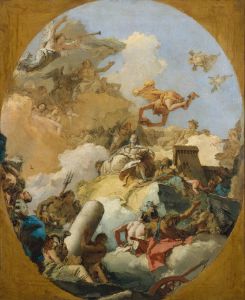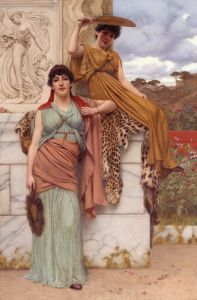
Procession
A hand-painted replica of Jean-Paul Laurens’s masterpiece Procession, meticulously crafted by professional artists to capture the true essence of the original. Each piece is created with museum-quality canvas and rare mineral pigments, carefully painted by experienced artists with delicate brushstrokes and rich, layered colors to perfectly recreate the texture of the original artwork. Unlike machine-printed reproductions, this hand-painted version brings the painting to life, infused with the artist’s emotions and skill in every stroke. Whether for personal collection or home decoration, it instantly elevates the artistic atmosphere of any space.
Jean-Paul Laurens was a prominent French painter and sculptor of the 19th century, known for his historical paintings that often depicted dramatic and somber themes. One of his notable works is "Procession," which exemplifies his meticulous attention to detail and his interest in historical and religious subjects.
Jean-Paul Laurens was born on March 28, 1838, in Fourquevaux, France. He studied under Léon Cogniet and Alexandre Bida, and he became one of the leading figures in the academic art scene in France. Laurens was particularly known for his historical paintings, which often portrayed scenes from the Middle Ages and the Renaissance, as well as religious and mythological subjects. His works are characterized by their dramatic intensity and precise detail, reflecting his deep interest in history and his skill as a draftsman.
"Procession" is a painting that captures a religious or historical procession, a theme that Laurens frequently explored in his work. While specific details about this particular painting are limited, it is consistent with Laurens' style to depict such scenes with a focus on realism and historical accuracy. His paintings often convey a sense of solemnity and gravity, and he was known for his ability to capture the mood and atmosphere of historical events.
Laurens' work was well-received during his lifetime, and he became a respected figure in the art world. He was a member of the Institut de France and served as a professor at the École des Beaux-Arts in Paris. His influence extended to his students, many of whom went on to become notable artists in their own right.
In addition to his paintings, Laurens also worked as a sculptor and was involved in various public art projects. His contributions to the arts were recognized with numerous awards and honors, and his works continue to be appreciated for their historical significance and artistic merit.
Laurens' paintings, including "Procession," are housed in various museums and collections around the world. They are valued not only for their aesthetic qualities but also for their ability to convey the historical and cultural contexts of the periods they depict. Laurens' dedication to historical accuracy and his skillful use of color and composition make his works enduring examples of 19th-century academic art.
Overall, Jean-Paul Laurens remains an important figure in the history of French art, and his paintings continue to be studied and admired for their technical excellence and their ability to evoke the spirit of the past. While specific information about "Procession" may be limited, it is representative of Laurens' broader body of work, which is characterized by its historical depth and artistic precision.





